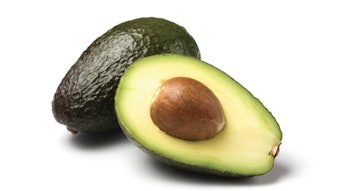
The Natural Marketing Institute (NMI) has presented its annual trends for 2008. These trends are the result of various NMI research sources including the Health & Wellness Trends Database (HWTD), the LOHAS Consumer Trends Database (LCTD), the Evolution of Personal Care Database (EPC), Healthy Aging/Boomer Database, and Immerzions as well as analysis of current activities in the marketplace. NMI databases, now including 10 years of data across 500,000+ U.S. consumers, provide comprehensive information across more than 150 product categories.
The Dual Society
The concept of a 'dual society' is the overarching theme across health, wellness and sustainability this year and formed the basis of all of NMI’s 2008 trends. According to NMI president Maryellen Molyneaux, “This concept is identified across each trend; as we look deeper at the trend itself, there is also a countertrend. Just as we see a bifurcation across the population, we also see a divergence within the trends which led us to identifying countertrends.”
An example of the bifurcation across the population occurs within NMI’s health and wellness segments of the U.S. population, where two opposite groups are seen. The 'Well Beings' and the 'Eat, Drink & Be Merrys' each represent approximately 25% of the population, yet they exhibit opposite attitudes and behaviors towards health and wellness. The 'Well Beings' are a very integrated and healthy group comprised of values-based consumers. Their polar opposite is the 'Eat, Drink & Be Merrys,' who are the least concerned, least health active and least involved consumers.
NMI’s Top Trends--and Countertrends--for 2008
1. The Dual Society
The concept of a unified America has given way to bifurcation across many aspects of society including income, education, religious values, the environment, politics and even a stratification across health behaviors and attitudes, as the healthiest and the least healthy segments continue polarization.
Countertrend
Technology continues to be the great societal equalizer, exemplified by Web 2.0 initiatives and the growth of social and business networks. The desire for unification and connectivity appears to be at the core of this movement, manifesting itself in social collaborations of all kinds including Facebook, Linked In, Family Post and Ancestry.com.
2. Generation Zzzzz
Generation Z represents an over-stimulated and burned-out generation, aged 25-45 subsisting on less than 7 hours sleep per night, surviving on caffeine-packed energy drinks and sleeping pills. The health implications of this behavior are just becoming known and include an increase in domestic violence, traffic accidents, obesity and stress among others.
Countertrend
In contrast to Gen Z are those seeking sleep alternatives through alternative medicine, meditation, a reduced schedule and a simplified lifestyle.
3. Stop, I want off!
The overabundance of technology, busier lifestyles, dual working families and instant gratification is driving many to “opt out” of the current consumer culture. From scaling back work hours to a renewed focus on “quality versus quantity” and even a rejection of technology, the consumer backlash reflects a growing recognition of the true “price tag” for such lifestyles.
Countertrend
While many are rejecting conspicuous consumption, the other end of the spectrum continues to embrace luxury, premiumization and 24/7 connectivity.
4. Dr. Me
Dr. Me reflects independent attitudes relating to health care decisions as more consumers research their own symptoms, diagnose their own illnesses and administer their own cures. Driven in part by dissatisfaction with health care, direct-to-consumer Rx advertising and access to online health portals, consumers are finding new, non-traditional ways to manage their health, including consumer-directed health care plans, alternative medicine, preventative DNA testing and more.
Countertrend
Juxtaposed with Dr. Me health attitudes resides an epidemic health care crisis with increasing rates of obesity, diabetes and heart disease.
5. The Culture of Sustainability
It’s not a matter of whether we will run out of natural resources--it’s a matter of when. Sustainability will become the most significant social movement of our time. It will permeate every aspect of consumers’ lifestyles, business infrastructures and other societal constituencies.
Countertrend
Consumers are overwhelmed with many sustainability initiatives with significant “green washing” fall-out expected as consumers learn to discern its true meaning and impact.
6. Golden Opportunities
The aging population is experiencing an unprecedented level of autonomy, choice and lifestyle participation. With those living past 80 the fastest growing demographic group, the idea of the ‘Golden Years’ is undergoing a radical transformation. From the workplace, to community, to caregiving, the implications are far reaching yet opportunistic.
Countertrend
Issues of loss of independence, control and even financial resources represent profound social consequences for seniors, caregivers, government and society.
7. The New Immunity
A rise in allergies and weakened immune systems is believed by many to be the result of toxic home and work environments, as well as a food supply manipulated by additives, genetic modification, antibiotics, hormones and herbicides. These concerns are driving a growth industry in nontoxic home and building materials, air purification systems, organic foods and allergy-free alternatives.
Countertrend
The lifestyle habits of many adults and children continue to decline in sharp contrast to the New Immunity awareness. NMI’s health attitude segment, 'Eat, Drink & Be Merrys,' demonstrates the lowest awareness or interest in food ingredients, additives, environmental factors and their health impact.
8. Giving is the New Taking
Volunteerism, activism and participation in the nonprofit sector are growing rapidly as consumers discover the emotional rewards of giving, rather than taking. To meet the challenge, corporations are engaging in CSR 2.0 in order to maintain brand allegiance, retain their workforce, and manage their stakeholders, among other activities.
Countertrend
Premiumization, the height of New Luxury, continues to evolve in strong contrast to a more values-based, philanthropic culture. At times, premium brands are even co-opting ‘green values.’
Look for more information and implications of these trends to be presented by NMI at industry events throughout 2008 and in the upcoming Health & Wellness Trends Report, to be published in April 2008.










